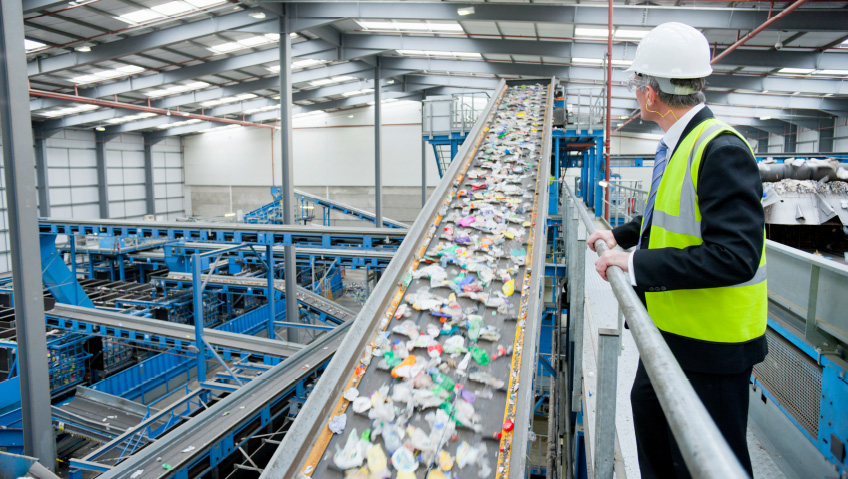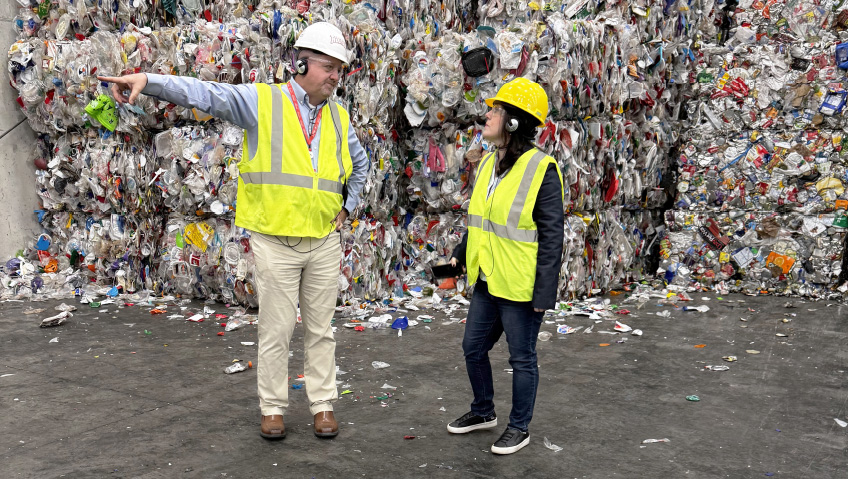A vital component of environmental preservation is sustainable waste management, which emphasizes material recycling, appropriate disposal, and trash reduction. The consequences of poor waste management techniques are becoming more and more obvious as urbanization and industry continue to pick up speed on a global scale, with inadequate waste management causing landfills to overflow, pollution levels to rise, and ecosystems to face serious challenges. A possible solution? Innovations that not only alleviate these issues but also advance a circular economy.
Poor waste management has an impact on the environment that goes beyond ugly landfills; it also greatly increases greenhouse gas emissions, contaminates soil, and harms wildlife. Environmentally friendly waste management, meanwhile, can increase waste collection efficiency, promote recycling practices, and encourage community and corporate participation in waste reduction programs, creating a radical change in direction toward sustainability, with waste seen as a resource rather than just trash.
SWANA (The Solid Waste Association of North America) is positioned at the forefront of waste and resource management, with its premier conference, RCon™, taking place this November 12 to 15 in Columbus, Ohio. RCon™ aims to transform the field by bringing together experts to address the challenges of resource and waste management, while attendees can learn about the latest trends and innovations aiming to transform.
Garbage collection is just one aspect of waste management, encompassing energy recovery, recycling, composting, safe disposal, and trash reduction at the source. When implemented properly, smart management transforms linear systems into circular ones where materials are recycled instead of thrown away, with valuable resources collected, repurposed, or converted into energy rather than ending up in landfills, says OneStop ESG.
Around the world, this strategy is being embraced in a variety of ways. Creative nations are setting the pace by promoting innovation in infrastructure, material processing, and even the design of products. In Mexico, for example, the use of bioplastics—using fruit waste to replace plastic—is one such feat. Biodegradable polymers are made from banana peels, an invention that offers a natural remedy for food waste in addition to replacing plastics derived from petroleum.
India is literally paving the way with plastic, incorporating plastic garbage into road construction to create longer-lasting, more affordable, water-resistant roads, a technique that calls for melting plastic garbage and mixing it with asphalt. Meanwhile, coffee waste is being used by furniture designers in the UK to generate fashionable interior pieces, creating long-lasting panels for tables, cabinets, and decorative finishes. By mixing discarded coffee grounds with natural resins, this method gives post-consumer or industrial trash a new, frequently more valuable life and demonstrates that circular designs can be both aesthetically pleasing and useful.
In Sweden, incinerators burn non-recyclable waste using high-efficiency technology before collecting the heat to create electricity and power district heating. Thanks to this unique method, Sweden sends less than one percent of residential waste to landfills, according to OneStop ESG.
In Canada, the need for ecologically friendly waste management systems appears to have grown during the last 10 years, says Environmental Business Review. Industries are being urged to reevaluate trash management and take into account more environmentally friendly options, resulting in more companies looking to adopt the concepts of the circular economy.
The issue of contamination—when specific non-recyclable products become mixed up with residual recyclables, ultimately increasing landfill waste—has been improved with new sorting technologies like robotics, machine learning algorithms, and AI-powered systems. Waste-to-energy (WTE) technologies have also become more popular, processing materials that cannot be recycled through basic recycling and instead converting non-recyclable garbage into electricity. These sophisticated systems transform environmental impact into renewable energy, advancing chemical recycling procedures to make better use of plastics.
In order to advance sustainable waste management techniques and usher in a new era, technology is essential, writes MD Shipon Hossain for Daily Green Life Ideas. Smart trash cans, for instance, interact with trash management services in real time thanks to Internet of Things (IoT) technology. Sensors installed in each bin keep an eye on capacity, guaranteeing that collection routes are optimum, lowering fuel usage and greenhouse gas emissions related to waste collection in addition to improving operational efficiency.
Waste-to-energy technologies like anaerobic digestion and incineration provide clear benefits in tackling the expanding garbage problem and producing energy. Through the biological process of anaerobic digestion, organic waste is broken down by microbes without oxygen, producing biogas—mostly methane—and using it to create fuel or electricity for vehicles, as well as reducing the amount of landfill space used. Incineration, on the other hand, reduces waste volume and produces thermal energy by carefully burning garbage at high temperatures.
Chemical recycling, which breaks down plastics and other materials using chemical processes, is becoming more popular as a practical substitute for mechanical recycling, writes Hossain, allowing plastics that have been polluted or are too complicated for traditional recycling procedures to be recycled to create premium materials that are reusable in a variety of applications.
Pyrolysis is another innovative technique that uses heat to break down organic materials without the presence of oxygen, with waste transformed into useful items like fuel, wax, and char. Both plastics and organic garbage can be handled efficiently by pyrolysis, enabling a dual strategy for sustainable waste management.
Urban mining, the process of recovering valuable resources from urban waste—especially electronic waste (e-waste), which builds up in cities all over the world—calls for creative approaches to sustainable waste management in order to reduce negative impacts on the environment and effectively recover valuable resources. These resources—metals such as gold, silver, copper, and even rare-earth elements—can be mined using cutting-edge hydrometallurgical technologies that maximize recovery rates and reduce environmental damage.
In recent years, composting has also advanced significantly, especially with the advent of contemporary technologies that improve the efficacy and efficiency of digesting organic waste. Aerated static heaps and in-vessel composting systems are two examples that provide a sustainable waste management option that enhances the organic materials’ decomposition process. By introducing air into a compost pile through a network of pipes, aerated static piles promote aerobic conditions that hasten the decomposition of organic materials, not only producing higher-quality compost but also significantly cutting down on composting time, preventing unpleasant smells and greenhouse gas emissions.
In-vessel composting uses enormous cylindrical containers to process organic waste in a confined environment and is appropriate for urban settings and densely populated communities with limited space, as they can deal with a variety of organic matter, including yard waste, food scraps, and agricultural waste.
Ultimately, stresses Hossain, collaboration between sectors will be vital for global success. Businesses, local communities, governments, and non-governmental organizations (NGOs) all have special assets and capabilities that can be used to develop creative answers to waste management problems. In addition to improving efficiency, these partnerships foster a sense of shared accountability for environmental stewardship. One notable example is the city of San Francisco’s partnership with local businesses to reach zero waste by 2030, a program that has successfully decreased the amount of waste dumped in landfills by about 80 percent by combining stringent restrictions, business incentives, and public awareness programs.
As the globe continues to struggle with the effects of pollution and trash, new technologies are being developed to address this urgent problem directly. Utilizing a clever fusion of various trends to provide solutions that add value is key to achieving success, while striking a balance between innovation and pragmatic operational demands will satisfy increasingly complex regulatory obligations. Businesses that successfully take advantage of advancements will reduce their expenses, increase compliance, obtain a competitive edge in their markets, and position themselves for long-term success.
Smarter waste management systems, using data-driven insights to inform blockchain, IoT, and AI-based technologies, can enhance output while reducing environmental impact, and by adopting these innovations, waste management stakeholders can actively promote a circular economy that prioritizes material reuse and waste reduction, transforming society’s relationship with garbage.
Waste management in the modern world means going beyond just picking up trash: it involves posing insightful queries, developing more intelligent systems, and repurposing existing items to create new value. The way forward lies in altering our relationship with trash, not in completely avoiding it. What we discard today might become the innovation we depend on tomorrow.






